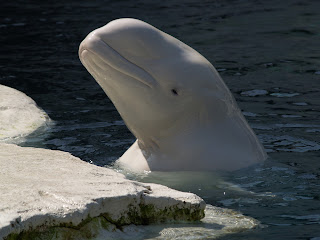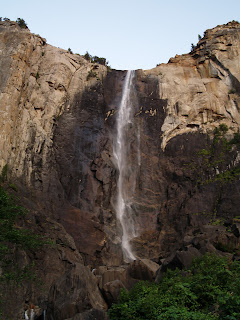No rush to get up today as Sea World doesn’t open until 10am. I thought it decidedly expensive at $70 but in the end, had to accept that it was good value. Of course there is Pleasurewood Hills and the Great Yarmouth Seaworld experience as a basis for comparison but this was in a different league. The entire place was spotless, everything was in tip top working order, there were plenty of toilets and places for childrens’ buggies to be parked, food was abundant if pricey and every feature had a gift shop to extract every last ounce of cash. There can be no doubt that America does theme parks very well indeed.
Entering the complex one is struck by the vibrancy of the flowerbeds and although borders and shrubs were more muted around the park everything was maintained to an exceptional standard.
No dying plants, no weeds and everything looking very cared for. We started out on the Skytower which helped to orientate us. This was basically a viewing platform that rose vertically from the ground and spiralled through 360 degrees to offer a panorama of the whole site. The first sea experience was the ‘Wild Arctic’ which was themed like an Arctic Research station with a wrecked ship on ice floes in the animal areas. Everything was visible both above and below water so I got up close and personal with beluga whales and turtles but the polar bear lay comatose on a rock so was not visible under water.
From here it was on to the ‘Penguin Experience’ where an Antarctic backdrop hosted an improbable range of penguins. On to ‘Turtle Reef’ and ‘Shark Encounter’ before my first encounter with the theatrical part of the day. I caught the end of ‘Clyde and Seamore’s Spooky Adventure’ in which two sealions and an uncooperative otter hunted for a missing will. This ended with the two human characters dancing with the sealions to Michael Jackson’s ‘Killer’.
From here I went to make sure of the Shamu Show which was clearly the day’s hi9ghligt as everyone on the park seemed to be headed there. This was a BIG production; video screens behind and the whole performance set to loud music as the Killer Whales were put through their paces and successfully saturated most of the people sitting in the “Soak Zone”. Before the show there was much made of the work of Sea World in terms of the conservation of marine life. Vendors plied a brisk trade selling strange looking Shamu soft drink containers at $11 a go. Refills were only $1!
Afterwards people were invited to dine with Shamu. A special viewing platform adjacent to one of the tanks allows diners to see the whales up close, for an extra fee.
Next up was the dolphin show. It was hard to see how they could top the Orcas but what they lacked in bulk, they made up for in numbers and athletic joy de vivre. Additionally, humans were part of the show both in and out of the water and there was a narrative theme with elements of circus thrown in for good measure.
At intervals exotic birds zoomed through the set as well. This was a long way from the dolphin show I remember on the Gold Coast when we went to Australia in 1979.
After all this anything else was bound to be something of an anti-climax. An hour was spent at Old San Diego, which is now a State Park and the old town has been re-created on its original site as far as possible.
This really needed more time to study the museum exhibits as well. Heading back to the camp site we stopped for an authentic fish taco. It was OK but I can’t see why some rave about this sort of food. I enjoyed a swim in the heated pool and a wallow in the spa bath before preparing food. The old pasta-tuna-sweetcorn thing again but this time I used Crackerbarrel cheese rather than the cheap American stuff. Much better!!
Early start tomorrow as we head into the desert where temperatures are expected to be over 36°C





















































